7 Ways to Improve Customer Service in the Education Sector

Table of contents
Henry is overwhelmed and unsure about where to begin when he tries to navigate the complexities of university admissions. But then he connects with Natalie, an admission representative who answers his questions and provides personalized guidance, resolving every issue that comes up.
Thanks to her exceptional support, Henry went from being interested to actually enrolling, which highlights how vital good customer service can be in shaping a positive educational experience.
In the education sector, the term “customer service” might not be heard often. But as more institutions seek to stand out in a competitive landscape, many are starting to realize just how important it is to integrate customer service into their strategy.
And for good reason—recent studies show that 52% of students view themselves as customers of the university, expecting a high level of service for their tuition fees.
Having said that, effective customer service in education goes far beyond just solving problems. It also enhances the overall experience by streamlining student-teacher interactions and meeting students, parents, and faculty’s ever-changing needs.
Schools and universities that prioritize customer service are not only increasing satisfaction across all stakeholders, but they’re also improving enrollment numbers and boosting student retention rates. In other words, they’re gaining a competitive edge.
In this post, we’ll explore the growing importance of customer service in the education sector, explore its key benefits, and outline strategies to deliver top-tier service to students and other stakeholders.
Table of Contents
- Defining the “Customer” in Educational Settings
- Key Challenges in Educational Customer Service
- 7 Innovative Strategies for Excellence in Educational Customer Service
- 1. Implementing AI-Powered Chatbots for 24/7 Support
- 2. Creating Personalized Student and Parent Portals
- 3. Leveraging Data Analytics for Proactive Support
- 4. Developing a Comprehensive Knowledge Base
- 5. Implementing Omnichannel Communication Strategies
- 6. Creating a Peer-to-Peer Support Network
- 7. Developing a Mobile App for Seamless Service Access
- Measuring the Impact of Customer Service Initiatives in Education
- Lifelong Learner Support: Extending Customer Service Beyond Graduation
- Wrapping It Up
Defining the “Customer” in Educational Settings
When we think about “customers” in education, they include students, parents, and other key stakeholders like local governments and board members. Each group relies on educational institutions to meet their specific needs, so delivering top-tier service is essential.
The consequences of poor customer service in education can be staggering. According to Stanford University, the cost of losing a student who leaves after attending for three or more years can reach nearly $40,000.
And it doesn’t stop there—when students have negative experiences, word spreads fast. This can damage word-of-mouth, ultimately hurting an institution’s enrollment numbers and lowering retention rates.
If an educational institution aims to maintain its reputation and deliver a seamless experience to its students, it’s crucial to integrate the right strategies into its customer experience (CX) approach.
But what exactly does that include? We’ll be exploring some of these key strategies shortly.
Before discussing the solutions, though, let’s first address the most common challenges in providing effective customer service within the education system.
Key Challenges in Educational Customer Service
The EdTech software market is expected to grow at a remarkable CAGR of 19.9% from 2021 to 2028, potentially generating over $200 million in annual revenue growth.
However, despite these promising projections and the increasing popularity of EdTech, many institutions face significant challenges. Many are still affected by balancing stakeholder needs, resource constraints, and budget limitations, as well as adapting to technological changes that add unnecessary complexity.
Let’s take a look at these challenges!
Balancing Multiple Stakeholder Needs
One of the most significant hurdles is managing the diverse needs of different stakeholders.
Students, parents, faculty, and even government bodies all have unique expectations from educational institutions. For instance, students may prioritize seamless online platforms and responsive support, while parents focus on clear communication regarding their child’s progress.
Faculty and administration, on the other hand, may require efficient tools for managing workloads and maintaining educational standards. A recent survey found that 69% of students expect personalized services from their institutions, highlighting how expectations have evolved.
Balancing all these demands can be overwhelming, especially when each group has a different idea of what “good service” looks like.
Resource Constraints and Budget Limitations
Many educational institutions operate with limited resources, which can directly affect customer service quality. With tight budgets, institutions might struggle to invest in cutting-edge technology, hire sufficient staff, or provide the ongoing training needed for excellent service delivery.
As a result, they may not deliver the timely, high-quality service that students and other stakeholders expect.
Adapting to Technological Changes
Technology in education is advancing rapidly, and staying up-to-date with these changes is a constant challenge.
Students now expect digital-first solutions like online portals, mobile-friendly communication, and virtual support. According to a McKinsey survey, 60% of students reported that access to efficient digital tools directly impacts their satisfaction with an institution. For institutions lagging behind in tech adoption, this can lead to a disconnect between student expectations and the service provided.
Additionally, keeping staff trained on the latest tools while managing other priorities can strain already limited resources.
7 Innovative Strategies for Excellence in Educational Customer Service
Institutions aiming for long-term success are starting to recognize that they don’t operate in a bubble. Education isn’t just about academics anymore; it’s about providing a 360-degree experience.
As changes continue across educational landscapes, one question has emerged at the forefront: “How can schools serve their students better to retain them for the long term?”
To answer this, we’ve outlined some innovative approaches that can help institutions offer exceptional customer service and create memorable and impactful experiences for students.
1. Implementing AI-Powered Chatbots for 24/7 Support
AI-powered chatbots are revolutionizing customer service in education. These conversational bots can simulate human-like responses to inquiries, providing round-the-clock support and enhancing service efficiency to meet the growing demand for instant information.
For example, Georgia State University introduced “Pounce,” a custom AI chatbot specifically designed to engage with newly admitted students. Pounce sends timely reminders, offers enrollment information, collects survey responses, and is available 24/7 to answer questions—helping to keep students on track.
Similarly, The University of Galway rolled out “Cara,” a virtual assistant accessible via their website and WhatsApp. Cara helps with various inquiries, from admission details to campus life, giving students immediate access to the information they need.
What makes these bots so impactful is their ability to handle multiple tasks seamlessly. Whether it’s answering questions about admission processes, available courses, fees, or campus life, AI chatbots can provide tailored information in real-time. They can even handle sponsorship queries and financial aid concerns, making them invaluable resources for both students and staff.
Furthermore, AI chatbots can detect emotional cues from students or parents and respond with empathy, creating a more personalized experience. They can also support individualized learning by understanding a student’s unique needs and preferences.
And because bots can handle frequently asked questions efficiently, instructors and staff can focus on more complex tasks, saving time and improving overall productivity. This is exactly what happened with the University of Murcia in Spain, where an AI chat assistant effectively handled over 38,708 inquiries with a remarkable accuracy rate of 91%.
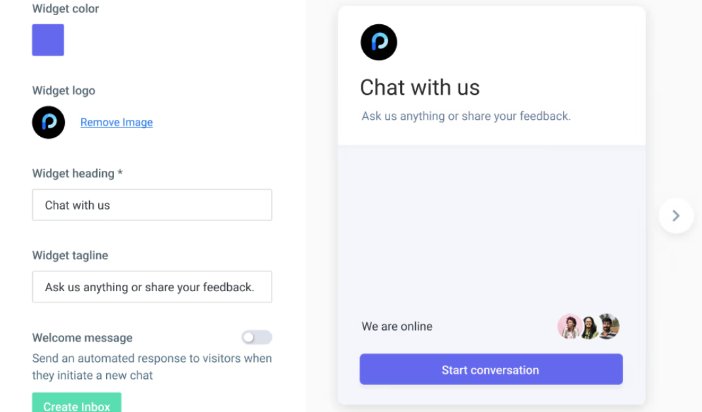
Integrating AI chatbots—like those designed by customer experience platforms like Hiver—into your support framework can significantly enhance user experiences. With continuous availability and quick responses, Hiver Chatbots foster a responsive support channel that meets the needs of both students and staff.
Moreover, Hiver’s chatbots are designed with three key components:
- Admin Module for setup and management
- Agent Module for real-time oversight of interactions
- End User Module for a seamless customer interaction experience
This comprehensive approach ensures that educational institutions can deliver fast and effective customer service, enhancing the overall experience for students and staff alike.
2. Creating Personalized Student and Parent Portals
Personalization has become a key driver of customer satisfaction in recent years, with 80% of consumers more likely to make a purchase when brands offer personalized experiences, according to a study by Epsilon.
This trend is no different in the education sector, where students and parents now expect the same level of tailored interactions they experience in other aspects of their lives.
Educational institutions are responding to this demand by implementing personalized portals, offering:
- Students and parents a seamless, customized experience throughout their academic journey
- Students the ability to view important information like course schedules, grades, and financial aid details
- Parents to track tuition payments, academic progress, and upcoming events, all in one centralized location
A well-designed portal keeps both students and parents engaged, ensuring they have the information they need at their fingertips without feeling overwhelmed by irrelevant data.
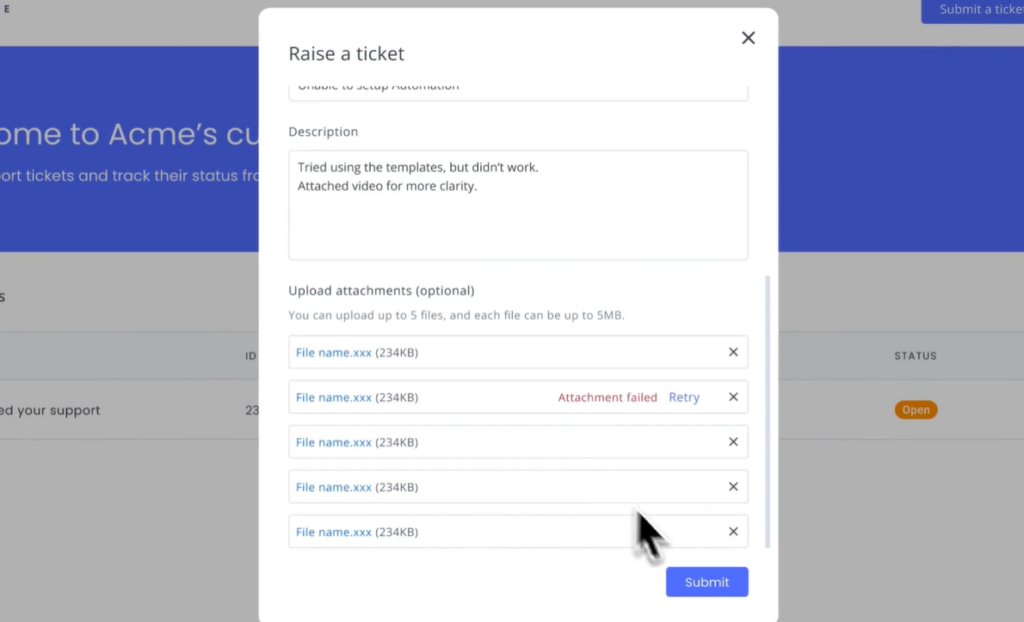
To make this process even more efficient, you can leverage Hiver’s customer portal to provide an all-in-one hub where students and parents can submit queries, track their status, and get answers without having to navigate multiple systems. This self-service feature keeps users in the loop at all times, ensuring that their concerns are addressed efficiently while reducing the workload on administrative staff.
The University of Arizona’s Student Success District offers a similar hub for academic support, career services, and counseling. This approach ensures that students receive personalized attention tailored to their unique needs, fostering a positive overall experience.
3. Leveraging Data Analytics for Proactive Support
Data-driven insights have revolutionized how institutions provide personalized support. According to a recent study, two-thirds of businesses are now competing primarily based on customer experience, with personalized data analytics playing a crucial role in shaping that experience.
In the education sector, analytics allow institutions to proactively identify issues students might face before they escalate, ensuring timely interventions and support.
Here are some examples of how universities leveraged analytics and AI technologies to boost CX:
- The University of North Texas used data analytics and visualization tools to track student progress, identify at-risk students, and implement necessary policy and procedure changes. By leveraging these insights, the university improved retention rates and saved $450,000 in the process.
- Western Governors University in Utah boosted the graduation rate for its four-year undergraduate program by 5% from 2018 to 2020 through the use of predictive modeling.
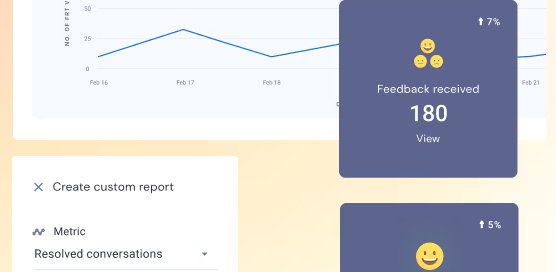
Hiver’s reporting and analytics feature makes it easier for educational institutions to track and analyze key metrics influencing student experience. Whether it’s monitoring response times for student queries or identifying areas where the support system is lagging, Hiver provides the insights needed to make data-driven decisions.
By having access to detailed reports and analytics, institutions can take a proactive approach to student support, ensuring they are always one step ahead in meeting their students’ needs.
4. Developing a Comprehensive Knowledge Base
Students and parents alike want quick, easy access to information that’s tailored to their specific needs, especially in a digital-first world.
This is where a robust knowledge base comes into the picture!
It allows institutions to provide self-service options for frequently asked questions, ranging from admissions to course details, enabling students and staff to find answers without waiting for direct support.
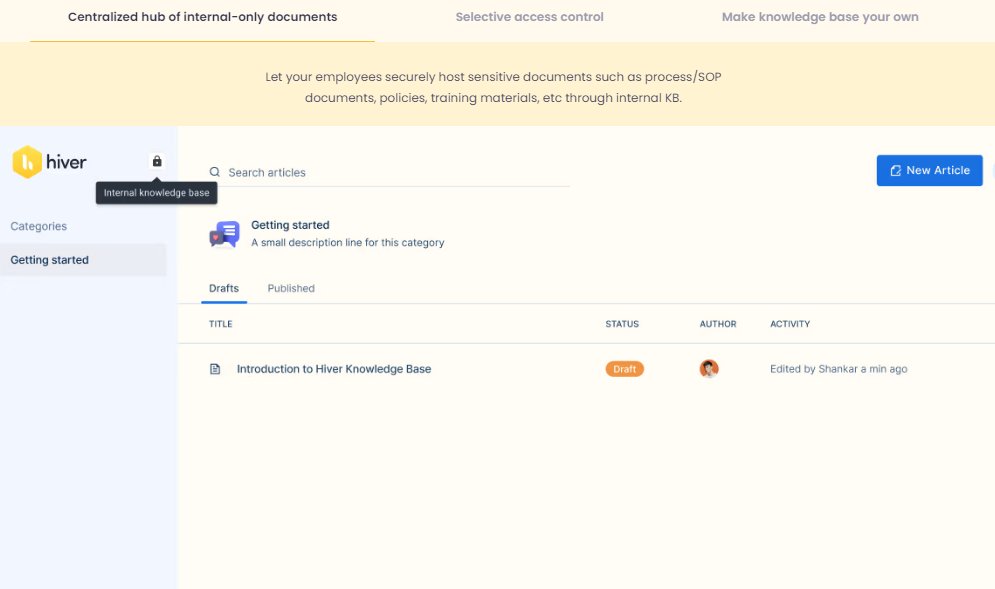
For instance, Hiver’s knowledge base (KB) enables educational institutions to create, host, and manage a centralized library of help articles for students and staff. The KB offers numerous benefits, including:
- Reducing Support Queries: Students can often resolve common issues independently, decreasing the volume of inquiries directed to support teams.
- Enhancing Student Satisfaction: Quick access to answers improves the overall experience for students and parents, leading to higher satisfaction rates.
- Onboarding and Training New Staff: The KB serves as a resource for training new staff members, helping them quickly learn processes and procedures.
- Improving Discoverability: Frequently asked questions and support articles can be optimized for search engines, making it easier for users to find the information they need.
Additionally, Hiver’s platform allows for tracking the effectiveness of help documentation, so institutions can continuously improve the quality of the information provided.
5. Implementing Omnichannel Communication Strategies
Schools and universities around the world are adopting the omnichannel approach to streamline how they interact with students, parents, and faculty.
Using tools like CRM platforms to bring together communication from different channels—email, social media, phone calls, and more—into a unified interface is now a common practice. By managing all these conversations on one platform, institutions can respond more quickly and efficiently to inquiries, regardless of the preferred communication channel.
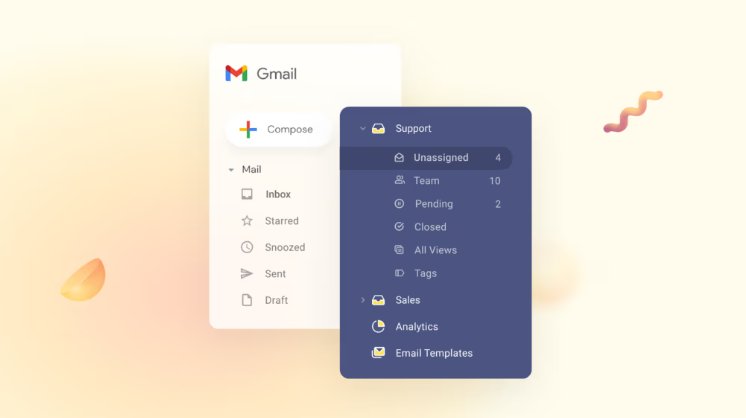
Hiver’s shared inbox is designed to enhance and streamline customer service in educational settings. Shared mailboxes, such as [email protected] or [email protected], enable efficient management of group email accounts.
With this feature, you can:
- Easily delegate tasks
- Track inquiries
- Collaborate on all student and parent emails that come into these shared inboxes
This ensures timely and effective support for everyone involved.
6. Creating a Peer-to-Peer Support Network
Building a peer-to-peer support network is becoming a powerful strategy for educational institutions. Not only does it foster a sense of community, but it also enhances student engagement and problem-solving by leveraging collective knowledge.
In this type of network, students can collaborate, share their experiences, and offer solutions to common challenges, creating an ecosystem of mutual support. When students help their peers, it encourages ownership of their learning journey and helps them develop soft skills like communication, empathy, and teamwork.
Additionally, peer networks often provide real-time support which makes resolving questions and issues that may not always require faculty intervention faster.
Research shows that 74% of students are more likely to trust advice from their peers than from institutions, especially when navigating complex academic paths and mental health concerns. That trust in peer-driven advice makes this strategy an invaluable tool for educational institutions looking to improve both student satisfaction and retention.
7. Developing a Mobile App for Seamless Service Access
A mobile app allows users to manage everything from checking schedules to making payments on the go, creating a more efficient and accessible experience.
For example, California State University, Northridge (CSUN) developed a comprehensive mobile app to simplify the student experience. The app includes features like tuition payment, class enrollment, and even a “Ask Matty” chatbot to answer student inquiries.
Its integration with social media makes it even more effective, offering students multiple ways to stay connected with the institution.
The app enhances user convenience, fosters student engagement, and ensures quick access to essential services by providing such features in one convenient platform. Institutions that invest in mobile apps not only improve the overall student experience but also boost retention rates by making support and services easily accessible anywhere, anytime.
Measuring the Impact of Customer Service Initiatives in Education
Educational institutions need to track and measure their impact to understand how well customer service initiatives are performing truly.
This is where Key Performance Indicators (KPIs) and feedback collection come into play.
Key Performance Indicators for Educational Customer Service
KPIs serve as essential metrics that help institutions evaluate the success of their customer service efforts. Some important KPIs include:
- Student Satisfaction Scores: These provide insights into how well students feel supported by their institution.
- Response Time: Tracking how quickly students’ queries are addressed across various channels.
- First Contact Resolution (FCR): Measures how often a student’s issue is resolved on their first attempt at contacting support.
- Student Retention Rates: A direct indicator of how effectively the institution supports students throughout their academic journey.
- Net Promoter Score (NPS): Gauges student loyalty and how likely they are to recommend the institution to others.
Each of these KPIs offers valuable insight into different aspects of the student experience, allowing institutions to make data-driven improvements.
💡 Pro Tip: You can also get more insights regarding KPIs in our recent blog, “10 Customer Experience Metrics and KPIs Every Business Must Track.”
Tools and Techniques for Gathering Feedback
Gathering feedback from students, parents, and faculty is crucial to enhance customer service. Using surveys, feedback forms, and real-time analytics tools can help institutions stay in tune with their stakeholders’ needs.
For example, surveys and polls are a simple yet effective way to get direct feedback on specific services or overall experiences. By asking students and parents about their interactions, schools can uncover areas for improvement.
On the other hand, real-time analytics tools help track trends in student inquiries and engagement, providing actionable data to adjust service strategies quickly.
As mentioned before, Hiver’s reporting analytics provide real-time insights into customer service metrics, significantly enhancing the efficiency of student support teams. Here’s how this can help you:
- Custom Reports for Tailored Analysis: Go beyond standard reporting with custom reports that provide the specific context you need more quickly. Gain in-depth insights into team performance to identify both high and low performers.
- Scheduled Reports for Strategic Decisions: Set up scheduled leadership reports to systematically review the achievements of your student support teams and overall institutional goals. Leverage insights from weekly, monthly, or annual performance reports to enhance your strategic planning.
- Dynamic Dashboards for Real-Time Insights: Consolidate metrics into a dynamic dashboard that spans shared inboxes and interactions. Customize these dashboards to track real-time metrics, adjusting them as your team’s needs and student expectations evolve.
With these KPIs and feedback tools, institutions can continuously monitor and refine their customer service initiatives to meet the evolving needs of their students and community.
Lifelong Learner Support: Extending Customer Service Beyond Graduation
To truly enhance the educational experience, institutions must embrace the concept of “Lifelong Learner Support.” This involves providing ongoing customer service even after students graduate.
For example, universities can offer:
- Career Counseling: Many institutions provide free career services to alumni, including resume workshops and interview preparation, helping graduates transition into the workforce successfully. For instance, the University of Southern California offers a comprehensive career support program for its alumni that includes networking opportunities and job search resources.
- Alumni Networks: Creating active alumni associations allows graduates to connect with each other and current students, fostering a sense of community. Harvard University has an extensive alumni network (Harvard Alumni Association) that provides mentorship programs and events for ongoing professional development.
- Continuing Education Opportunities: Many educational institutions offer discounted courses or certifications to alumni, enabling them to update their skills and stay relevant in their fields. The University of Michigan, for example, offers a variety of online courses that alumni can take to further their education at reduced rates.
By providing these resources, institutions can maintain relationships with their graduates and support their long-term success.
Lifelong learner support benefits the alumni and positively reflects on the institution’s reputation, fostering a sense of community and engagement. Educational institutions that adopt this approach can enhance their customer service strategy and encourage alumni to remain connected, potentially benefiting future enrollment and retention.
Wrapping It Up
Providing exceptional customer service in education doesn’t mean you need to compromise on academic standards. After all, the principles of great customer service—such as being responsive, efficient, communicating clearly, and managing conflicts—don’t interfere with academic quality.
Instead, it’s about empowering your staff to offer the best possible support to students. When you invest in your employees and help them excel at delivering top-notch service, you create a better environment for student retention and success. By focusing on these service aspects, you’re not only keeping students enrolled but also setting them up to graduate and thrive.
And if you’re ready to make this shift, Hiver offers a simple way to get started. You can sign up for a free trial today and see firsthand how it can help improve your institution’s customer service!

































